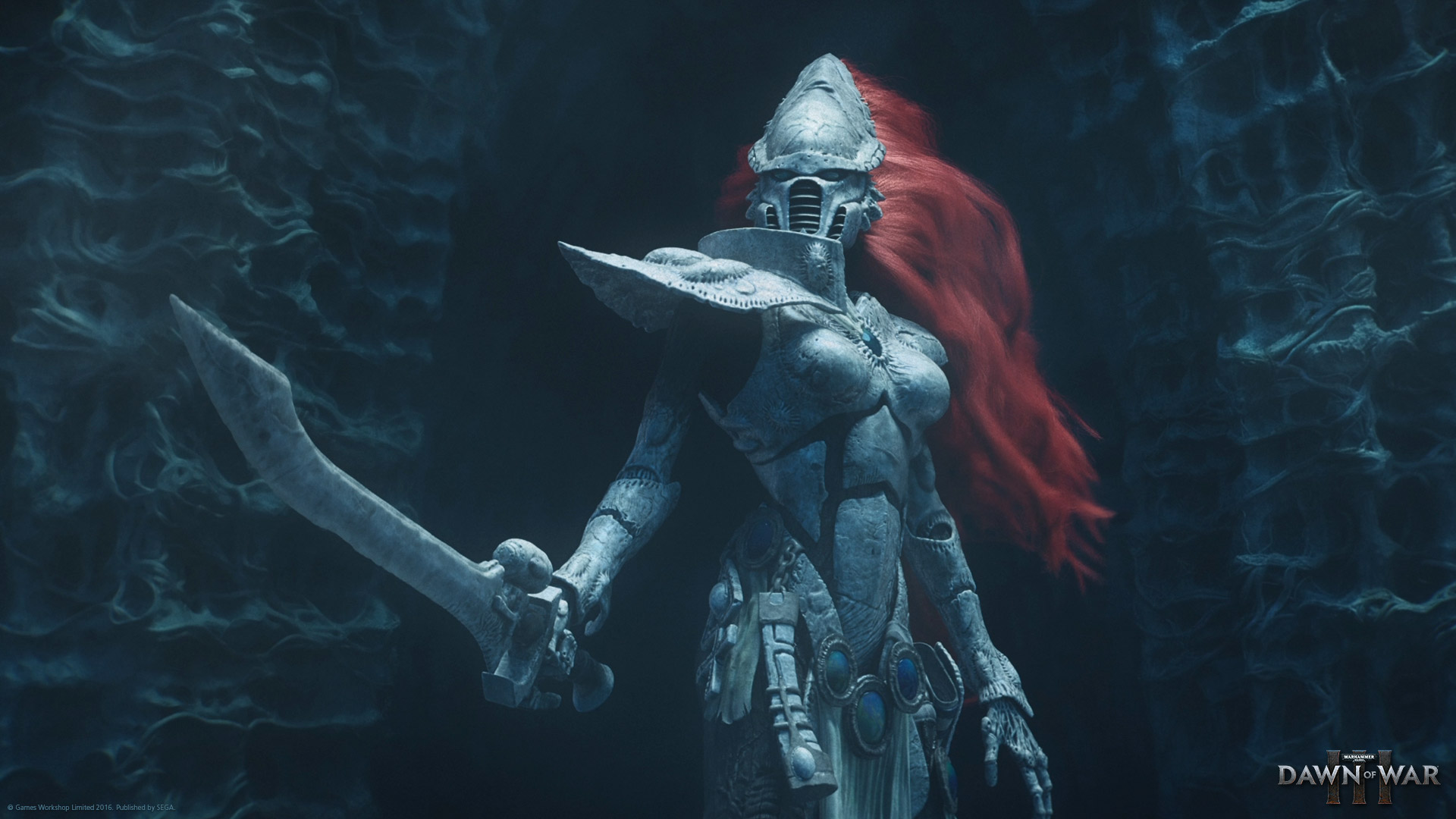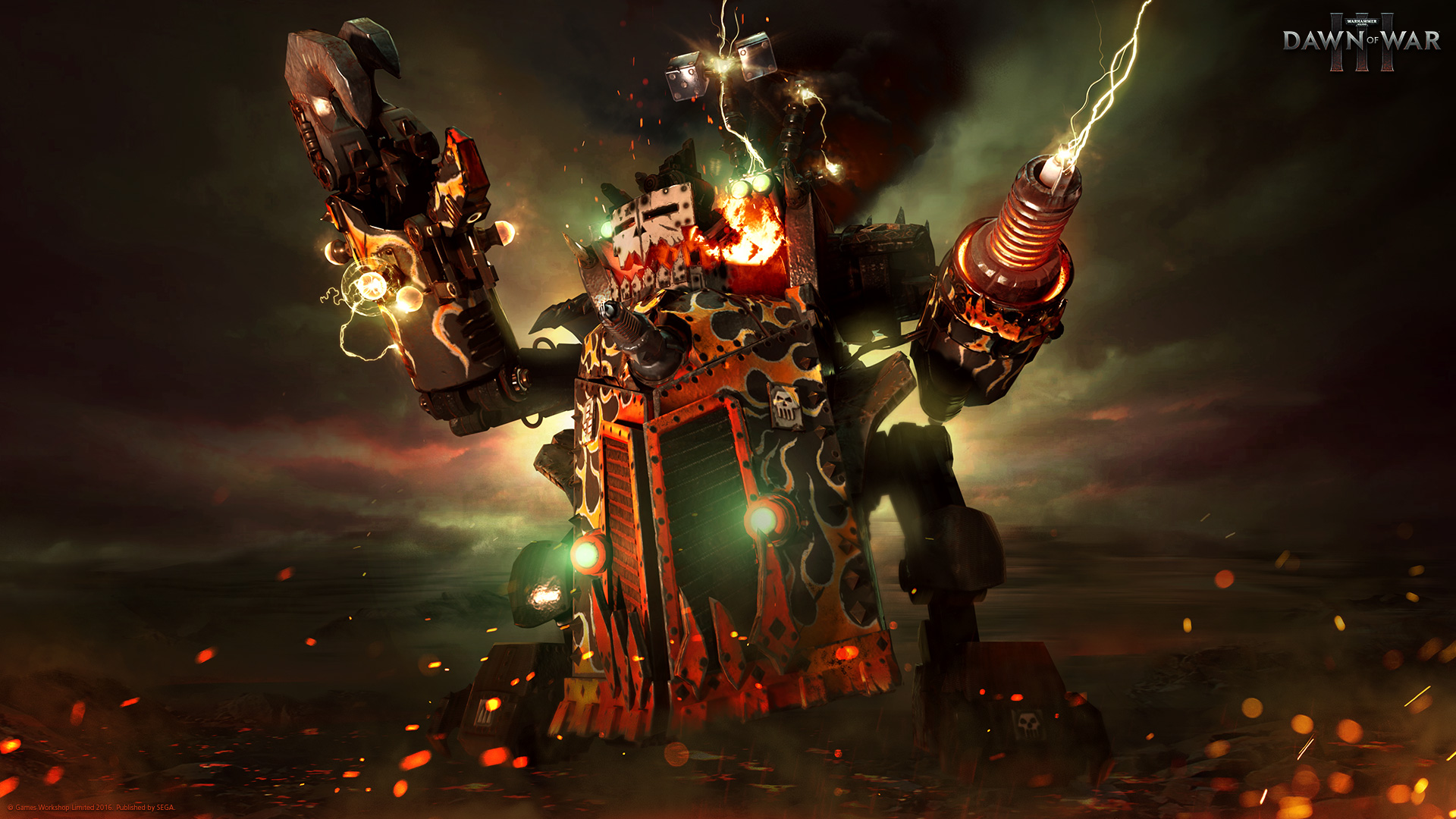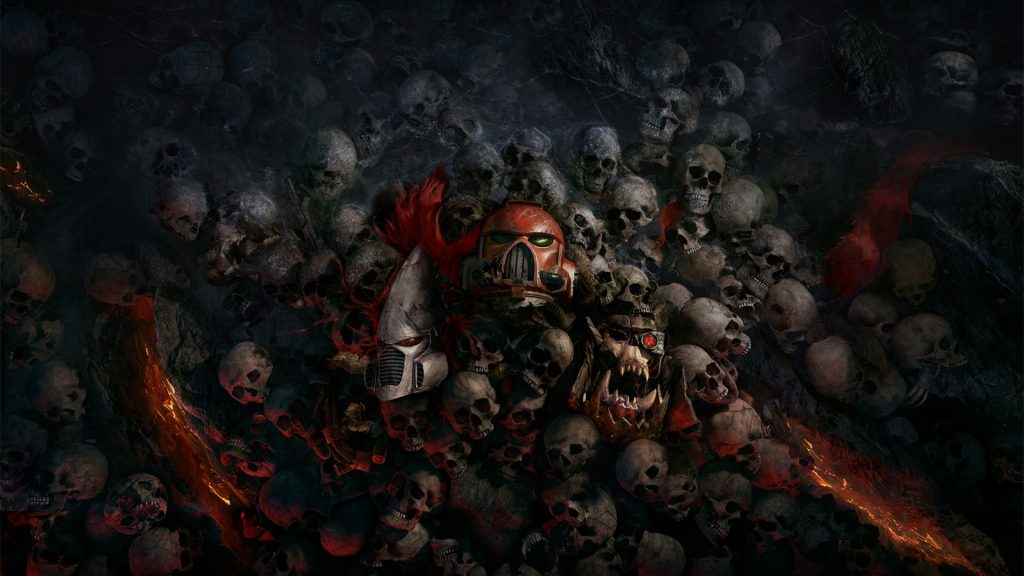Battle Brothers! Space Marines – today the enemy is at our door!
It’s difficult not to be excited that a new Dawn of War is coming, and Blood Ravens dutifully come with it. After their spectacularly bad luck between Dawn of War 2 and DoW2: Retribution they managed to bounce back and build their numbers up again.
What await them this time? What new threat draws their ire and what new relic is deemed worthy of their attention? Let’s gaze into the Warp to get a glimpse into the grim darkness of the far future of April 2017.
Universe at war
Let’s briefly discuss the setting itself, for those who may not know much about it. Warhammer 40.000 (WH40k) is a setting hailing back to the 1980s and proudly refusing to accept that the 80s are dead. As a result we have 7ft tall mutant cyborgs, alien lifeforms straight from H.R. Giger’s nightmares, and psychic gods residing in an alternative dimension. It’s a delightful mix of tropes, clichés and motifs surviving mostly on the Rule of Cool. It’s not slick, it’s not very subtle or considerate. It’s 80s distilled and it’s awesome.
War for Pointy Stick
The plot setup for Dawn of War 3 isn’t overly complicated. A planet hiding an ancient Eldar relic, the Spear of Khaine, comes around and the Eldar want to retrieve the artifact of their god, hoping it would help them become strong again. The Space Marines are determined to keep the artifact away from the pointy-eared manipulators. And the Orks? Well, it’s is a pointy stick with potential for apocalyptic destruction after all. What other reason do they need?
Deploy dozens, kill hundreds
Large armies we remember from the glory days of Dawn of War 1 see their return in the franchise’s third main installment. With the unit limit of 200 we will finally be able to mix it up a lot in terms of army composition and field enough Blood Ravens to make giving them orders a pleasantly hectic experience. Vehicles also come back, from Rhinos (“we should take away their little boxes!”) to Land Speeders. Nothing’ll stop you from deploying an entire fleet worth of transporters if you want. Not that it would be a good idea from a tactical standpoint.
As a result large-scale battle armies are very viable, especially in singleplayer, where opponents are very likely to have scripted armies, bypassing some of the limitations.

Elites for hire
It’s hard to have your cake and eat it too, but DoW3 may have figured out how to do it. In addition to bringing back the first Dawn of War’s large armies, Relic’s new game also managed the implement hero units that were the focus in DoW3.
Pick your team
Each army will have several of them, including each side’s leaders: Gabriel Angelos for the Space Marines, Farseer Macha for the Elder, and Gorgutz ‘Ead’unter for the Orks.
In addition to Angelos the Blood Ravens will have the services of Imperial Knight Solaria (huge robotic walkers piloted by a noble), Assault Terminator (teleporting Space Marines in extremely heavy armor), and Librarian Jonah Orion (a powerful psychic, a returning character). There will probably be more of them, and all factions will have a variety of Elite units.
The cost of power
Elites are powerful enough to turn the tides of battle, but not enough to win skirmishes on their own, which is exactly as it should be. They won’t be deployed for free, either. Each of them has a prescribed Elite Points price you need to pay to deploy them, and these points don’t exactly flow. It introduces some measure of strategic planning: summon a cheaper Elite now, or wait longer to get a more powerful one?
Of course, this may look differently in the singleplayer campaign, where presence of hero units will likely be determined by the plot.
Strategic layer
Dawn of War 3 doesn’t try to rewrite the RTS rulebook, nor to upset the gameplay basics established in the first incarnation. In Dawn of War 3 resource-gathering peons are gone. Instead you capture strategic points which provide a generic “resource” you use for all your endeavors. You also gather energy from generators, and Elite points from designated locations. It’s rather simple and allows the player to focus on the core issue: murderkilling your enemies. Directing workers to anything other than construction would be too distracting from wholesome carnage typical of Warhammer 40k.

Power (core) is everything
You endgoal will be a power core located in the center of your opponent’s main staging area. Destroy that and the victory is yours. Just be sure to disable turrets and power shields, or your assault will be a short one.
It may sound similar to the objective in some MOBA games, but do not be afraid. Dawn of War 3 is going to be an RTS through and through, despite borrowing an idea or two from other genres.
Emperor protects
Warhammer 40.000: Dawn of War is definitely shaping up nicely, and that’s even before discussing things like change cover systems or visual style redesigned from the ground up. Three armies given equal focus in gameplay complexity and storyline, refreshed but familiar mechanics, and return of some old friends make DoW3 a very promising title. Laudably, the pre-order bonus doesn’t lock any vital content within it, providing just cosmetic changes for your Titan-class units. DLCs/bonuses that do not divide the playerbase are the way to go.
Warhammer 40.000 : Dawn of War 3 launches on April 27 this year.
Are you going to fight for the Emperor, Craftworld Biel-Tan, or more dakka?
This post didnt have a specific author and was published by PS4 Home.

